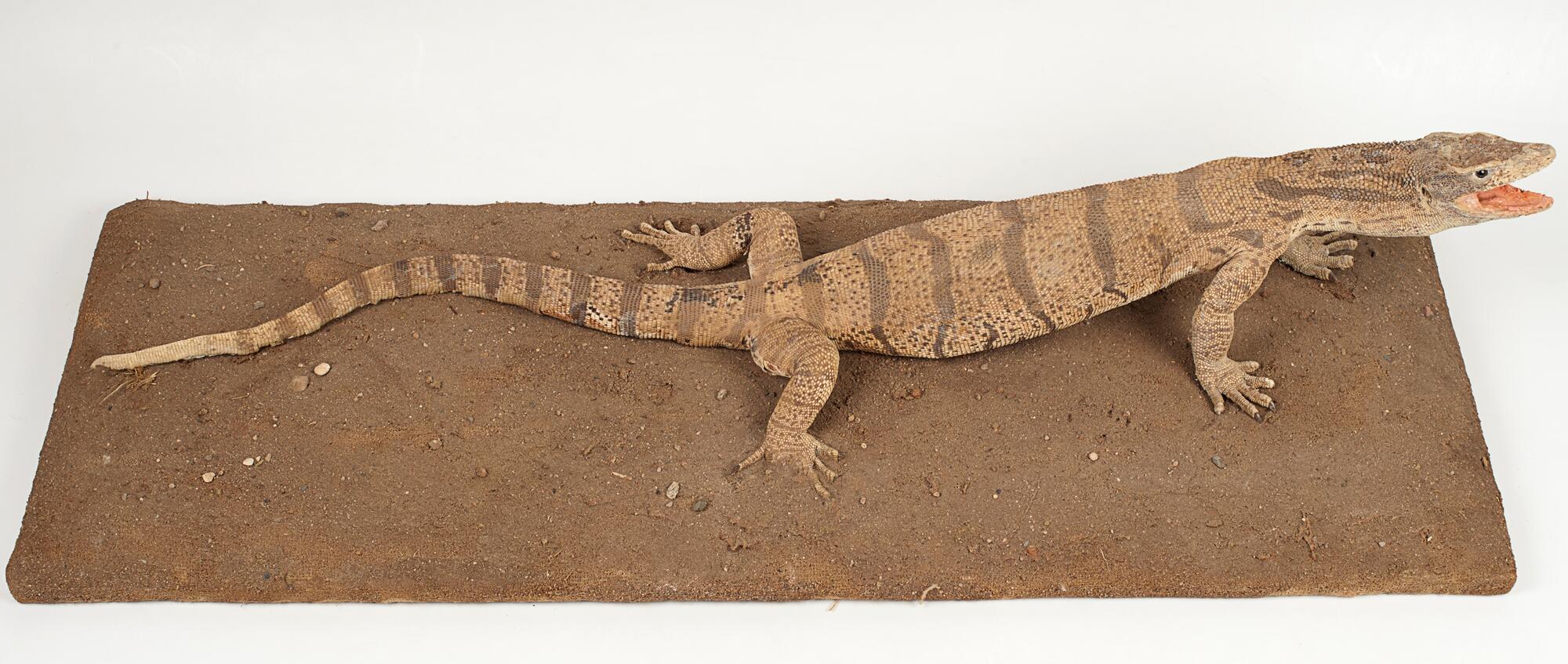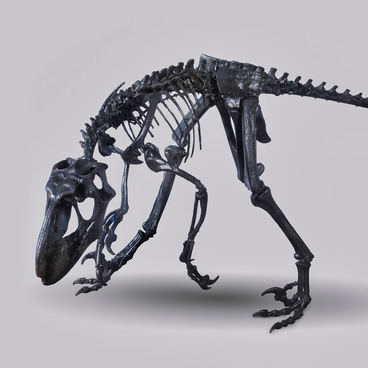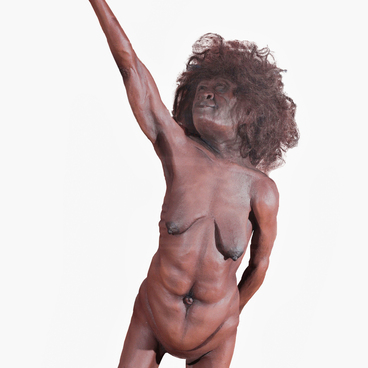The exhibition of the biological museum presents a desert monitor (Varanus Grizus) — the largest lizard in Russia. It is often called a land crocodile. The semi-straight limbs allow this large predatory lizard to run quickly without dragging its belly along the ground. You can distinguish a desert monitor by its porrect body, elongated neck, forked tongue and powerful whip-like tail, which it does not ever shed.
The desert monitor grows up to one and a half meters long, if you count with the tail, and weighs about three and a half kilograms. However, it is not the largest lizard in the Monitor lizard family. For example, a giant monitor lizard from Komodo Island can reach three meters in length and weigh more than 130 kilograms.
The desert monitor feeds on small mammals, turtles, lizards and insects, as well as carrion. A heavy tail allows him to stun or knock down a small animal. The desert monitor grabs the prey by the neck and shakes it, holding it in its jaws, hits the rocks and the ground to break the bones, and then swallows the whole animal. It can cope with a prickly hedgehog, a poisonous cobra, and sometimes attacks young representatives of its own kind.
The desert monitor swims well and is able to catch up with prey in the water. It can climb trees, catches birds and often ruins bird nests. When hunting large animals, the lizard uses a complex strategy. It grabs the victim by the legs, biting the tendons and preventing it from running, and then repeatedly bites until the prey bleeds out.
The desert monitor lives mainly in deserts and semi-deserts, settles in burrows up to four meters long. Its nostrils are arranged in a special way: the nasal passages are curved in the shape of an arc and open near the eyes, so the sand does not clog them. A desert monitor can dig a hole on its own, or it can expand the shelter of some rodent, gopher or gerbil. The lizard spends night in a shelter, and during the day it goes out to hunt, moving away from it for more than a kilometer. In the same hole, plugging the exit, the desert monitor spends its winter hibernation.
Desert monitors are territorial, usually only one individual lives on each site. During the mating season, males arrange ritual tournaments. Females lay two dozen eggs in a burrow, from which young desert monitors appear at the end of summer.
The desert monitor grows up to one and a half meters long, if you count with the tail, and weighs about three and a half kilograms. However, it is not the largest lizard in the Monitor lizard family. For example, a giant monitor lizard from Komodo Island can reach three meters in length and weigh more than 130 kilograms.
The desert monitor feeds on small mammals, turtles, lizards and insects, as well as carrion. A heavy tail allows him to stun or knock down a small animal. The desert monitor grabs the prey by the neck and shakes it, holding it in its jaws, hits the rocks and the ground to break the bones, and then swallows the whole animal. It can cope with a prickly hedgehog, a poisonous cobra, and sometimes attacks young representatives of its own kind.
The desert monitor swims well and is able to catch up with prey in the water. It can climb trees, catches birds and often ruins bird nests. When hunting large animals, the lizard uses a complex strategy. It grabs the victim by the legs, biting the tendons and preventing it from running, and then repeatedly bites until the prey bleeds out.
The desert monitor lives mainly in deserts and semi-deserts, settles in burrows up to four meters long. Its nostrils are arranged in a special way: the nasal passages are curved in the shape of an arc and open near the eyes, so the sand does not clog them. A desert monitor can dig a hole on its own, or it can expand the shelter of some rodent, gopher or gerbil. The lizard spends night in a shelter, and during the day it goes out to hunt, moving away from it for more than a kilometer. In the same hole, plugging the exit, the desert monitor spends its winter hibernation.
Desert monitors are territorial, usually only one individual lives on each site. During the mating season, males arrange ritual tournaments. Females lay two dozen eggs in a burrow, from which young desert monitors appear at the end of summer.



